I’ve been getting a lot of requests to recommend a budget wildlife photography setup. So, here it is—the budget wildlife photography setup for 2024. If you’re looking for a super budget camera that captures excellent wildlife photography images, this is for you. However, it’s important to note that the camera alone won’t perform miracles; other factors also contribute to great photography.
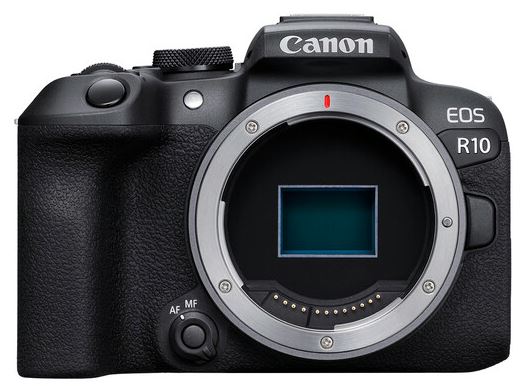
Check Latest Deals at Amazon.com | B&H Store
1. Canon R10 – The Best Beginner Level Camera for WILDLIFE Photographers
Let’s start with the best budget camera. If you’re looking for the best wildlife photography camera under $1000 in 2024, the Canon R10 is currently the best option. The Canon R10 features a 24-megapixel Dual Pixel CMOS sensor with more than 4503 individually selectable AF points, helping you to grab and track your subject very well. This camera offers a capture speed of 23 frames per second when using the electronic shutter and up to 15 frames per second with the mechanical shutter. However, it’s worth noting that cameras in the under $1000 range may experience some rolling shutter issues, as they do not have stacked sensor integration, which would increase the overall cost of the camera.
So, what’s the remedy? How can we minimize the rolling shutter effect when our subject is moving, and we’re tracking it in wildlife photography? You can use the mechanical shutter. The mechanical shutter overrides the effects of a slower sensor. With the Canon R10, using the mechanical shutter at 15 FPS will help you capture awesome images with minimal rolling shutter distortion.
Here’s a concise table for the pros and cons of the Canon R10:
| Pros | Cons |
| High frame rate (23 FPS) | Prone to rolling shutter |
| Advanced autofocus with 4000+ DPAF points | No stacked sensor |
| Affordable price | Limited weather sealing |
| Lightweight and compact | Moderate battery life |
Now, let’s talk about the lens you need with your Canon R10 camera to perform exceptionally well in wildlife and bird photography.
BEST Wildlife Photography Lenses for Canon R10
Best Lens for the Canon R10 in the Budget Range: The RF 100-400mm f/5.6-8 IS USM [B&H Store] Lens is an excellent choice. This lens covers the 100-400mm range, and is budget-friendly but does not compromise on optical quality, delivering stunning results when used with the Canon R10 camera.
This lens performs exceptionally well even when used with the Canon R7 camera body. I have used this lens along with the RF 1.4x extender, and it still exceeded my expectations. Previously, I have tried and tested the EF 100-400mm L series on a 90D body, and this new lens performs just as well, if not better. Additionally, this lens is far lighter than any of the EF 100-400L versions, making it more convenient for long shooting sessions.
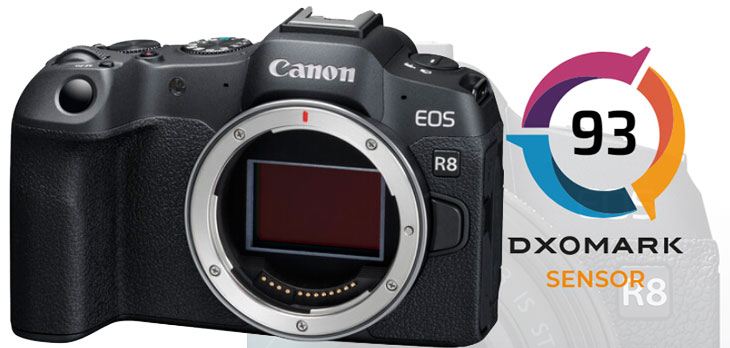
Check Latest Deals at B&H Store | Amazon.com
2. Canon R8 Best Budget Full Frame Canon Camera
I still can’t believe the price is so low for an entry-level full-frame camera with such outstanding quality. The camera is the Canon R8.
| Pros | Cons |
| High-quality full-frame sensor | Limited battery life |
| 4K video at 60 FPS | Limited native RF lens choices |
| 40 FPS continuous shooting | Basic build quality |
| Affordable price |
For those upgrading from the Canon RP, let me remind you that this particular model has a faster and cleaner sensor compared to the Canon RP. You can capture incredible low-light JPEGs and record 4K videos at up to 60 frames per second without any crop. It’s an incredible camera designed for the new generation of Canon users.
Even if you are an advanced photographer looking for a secondary body, this is an excellent option for you.
The Canon R8 has a massive processor and a sensor, identical to the one in the Canon R6 Mark II, which is why it’s sometimes called the budget R6 Mark II. It is particularly useful for wildlife and bird photographers, or even sports photographers, thanks to its ability to shoot continuously at 40 frames per second. This feature is perfect for capturing moving subjects in a freeze-frame, making it one of the best options available at a very reasonable price.
Even if you have the budget for the Canon R6 Mark II, I recommend opting for the Canon R8 and spending the remaining budget on a good lens. Having a quality lens can make a significant difference in your photography.
BEST Wildlife Photography Lenses for Canon R8
Here are the recommended lenses for the Canon R8 camera:
- Canon RF 100-400mm f/5.6-8 IS USM: Check Latest Deals at Amazon.com | B&H Store
- This versatile zoom lens features exceptional optical quality, delivering sharp images.
- It also includes optical image stabilization, which helps in capturing quality shots, especially in handheld situations.
- Canon RF 200-800mm f/6.3-9 IS USM: Check the Latest Deals at Amazon.com | B&H Store
- This lens offers an incredible zoom range from 200mm to 800mm, providing excellent versatility for wildlife photography.
- It produces high-quality images with great contrast and is relatively lightweight at around 4.5 lbs, making it a great choice for handheld shooting.
- The lens performs exceptionally well with the Canon R8 and R7, offering a dynamic range that captures everything from butterflies to the moon with sharpness and clarity.
3. Canon R7 – Best PRO – APS-C Camera from Canon for sports and wildlife
The next camera in our recommendation list is an APS-C camera from Canon, the Canon R7.
| Pros | Cons |
| APS-C crop factor provides extra reach | APS-C sensor may have lower low-light performance compared to full-frame |
| High-resolution sensor for detailed images | Limited native RF-S lens options, Have to buy Fullframe Lenses |
| Fast continuous shooting (30 FPS electronic, 15 FPS mechanical) | Rolling shutter effect with electronic shutter |
| Compact and lightweight | |
| 7.5-8 stops of in-body image stabilization (IBIS) | |
| Advanced autofocus with subject tracking |
One of the biggest advantages of having an APS-C camera like the R7 is the extra crop factor. This crop factor effectively extends the reach of your lenses, allowing you to capture distant subjects more easily. The Canon R7’s high-resolution sensor is capable of resolving fine details, even when using full-frame lenses. While you aren’t utilizing the entire area of full-frame lenses, you’re working with the central part, which is often the sharpest. This results in exceptional image quality.
Another advantage of the Canon R7 is its 7.5-8 stops of sensor-based image stabilization. This feature is invaluable in situations where you need to hand-hold your camera, helping to reduce camera shake and produce sharp images.
In terms of speed, the Canon R7 offers impressive performance. It can shoot up to 30 frames per second with the electronic shutter, which is perfect for capturing fast action. If you prefer to avoid rolling shutter effects, the mechanical shutter can shoot at 15 frames per second, providing almost negligible rolling shutter impact.
The Canon R7 is also compact and lightweight compared to full-frame options in the same price range, making it easier to carry. Despite being an APS-C camera, it delivers excellent image quality and good low-light performance.
The Canon R7 is highly recommended for wildlife and sports photographers, even in 2024, as it is one of the best APS-C format cameras Canon has ever created. In my video, I’ve also recommended some lenses specifically for sports and wildlife photography with Canon RF mount cameras, which can help you capture amazing shots with the Canon R7.
CONFUSED – Let Me Help You in Your Camera Selection
Which Camera Should You Pick for Wildlife Photography: Canon R7 or Canon R8?
Between the two, my personal favorite is the Canon R8, as it features a faster sensor readout and exceptional low-light performance compared to the R7. Additionally, if you are using a monopod, the lack of in-body image stabilization (IBIS) in the R8 is not a significant issue. Overall, based on the camera’s performance, my personal selection is the Canon R8.
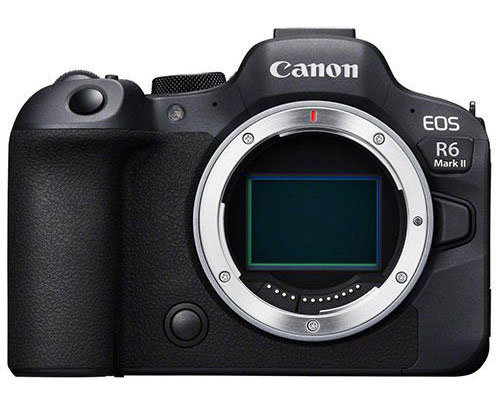 Check Latest Deals at Amazon.com | B&H Store
Check Latest Deals at Amazon.com | B&H Store
4. Canon R6 Mark II: Still the Best Choice for Wildlife Photographers
Here’s a concise table of the pros and cons of the Canon R6 Mark II (Canon R6 II):
| Pros | Cons |
| Excellent image quality | Limited resolution (20.1 MP) |
| 8 stops of in-body image stabilization (IBIS) | No top LCD display |
| 12 FPS mechanical, 40 FPS electronic shutter | Moderate battery life |
| Advanced autofocus with subject tracking | Limited native RF lens options |
The Canon R6 Mark II is a perfect choice for wildlife photographers if your budget allows for it. It’s also important to have some extra cash left to buy lenses like the RF 100-400mm or the recently announced RF 200-800mm. If you have the budget to buy one of these lenses, the Canon R6 Mark II is highly recommended. However, if your budget is more limited, you can consider the cameras like the Canon R8, as previously mentioned.
The biggest advantage of the Canon R6 Mark II is its 8 stops of in-body image stabilization (IBIS), paired with 12 FPS mechanical shutter speed. These are two of the most important features of this camera. When using the 12 FPS mechanical shutter, you don’t have to worry about rolling shutter effects. Additionally, with IBIS’s help, you can easily capture complex scenes. This particular combination makes the Canon R6 Mark II a lethal and highly capable choice for wildlife
Editors Note about Canon This camera has optimally the best 24.2 MP sensor for its timing of 2024 and for the price of 2k. The Autofocus is Fast and the feature to zoom in even more using the Magnifying glass is very helpful to catch the subject in the middle of the frame when the lens may not be able to see it. The button layout in most certainly astronomical. And also very ergonomically fitting and designed for the hand. The Scroll function is best suitable for individuals who want to further 2x the image from the point from which it was taken. Also not to mention the joystick which was a major key point for selecting this camera out of many others. Also it is noticed that the video to photo switch has been re-designed compared to the regular R6. Also for the camera function bottoms you have 3 customizable setting for your liking. Also the fact that it can shoot up to 40 FPS raw with a silent shutter is absolute impressive for the price point of only 2k. Not to mention the RF lens selection is very pronominal duo to the mas selection of wide angled and telephoto lenses. The battery life is very suitable to the average photographer who is just doing this as a hobby. But if you are out on a long trip I would advises that ones makes the purchase of a Battery grip.
BEST Wildlife Photography Lenses for Canon R6 Mark II
Here are the recommended lenses for the Canon R8 camera:
- Canon RF 100-400mm f/5.6-8 IS USM: Check Latest Deals at Amazon.com | B&H Store
- Canon RF 200-800mm f/6.3-9 IS USM: Check the Latest Deals at Amazon.com | B&H Store
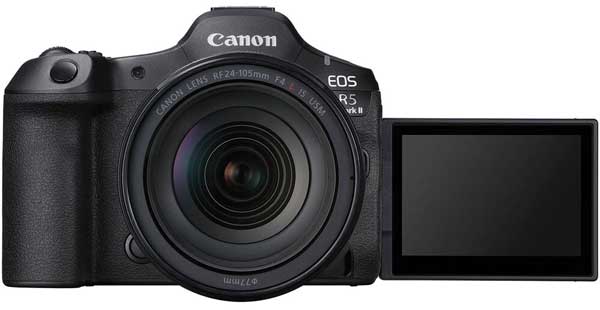
Check the Latest Deals at Amazon.com | B&H Store
5. CANON R5 II – Best Camera for Sports and Wildlife Photography in 2024
- High-Resolution Sensor: The camera boasts a 45-megapixel full-frame sensor, allowing you to capture incredible detail in every shot.
- Fast Readout Speed: The sensor’s readout speed is 6.7 milliseconds, which helps minimize rolling shutter effects when capturing fast-moving subjects.
- High-Speed Shooting: The Canon R5 Mark II can shoot at a rate of up to 40 frames per second, making it ideal for capturing fleeting moments in sports and wildlife.
- Advanced Image Stabilization: The camera features an 8-stop hybrid image stabilization system, providing super stable shots, even when shooting handheld.
- AI Denoise and AI Upscaling: After shooting some extra innovation can be done with the images
This combination of high resolution, fast shooting speed, and advanced stabilization makes the Canon R5 Mark II an extremely capable and versatile camera for sports and wildlife photography in 2024.
Why Canon R5 Mark II is the BEST Camera for Wildlife and Biography
We are calling the Canon R5 Mark II the best camera for sports and wildlife photography in 2024 for two main reasons.
- First, the camera offers an exceptional level of detail, which is crucial for wildlife and bird photographers. This is made possible by the camera’s high-resolution 45-megapixel sensor, allowing photographers to capture fine details in every shot.
- Second, the Canon R5 Mark II features a super fast readout speed, which significantly reduces rolling shutter effects, even at high continuous shooting speeds. This combination of high resolution and fast readout speed makes it an ideal choice for capturing fast-moving subjects in sports and wildlife photography.
Best Lens for Canon R5 Sports and Wildlife Photography – Canon RF 100-500mm f/4.5-7.1 L IS USM Lens
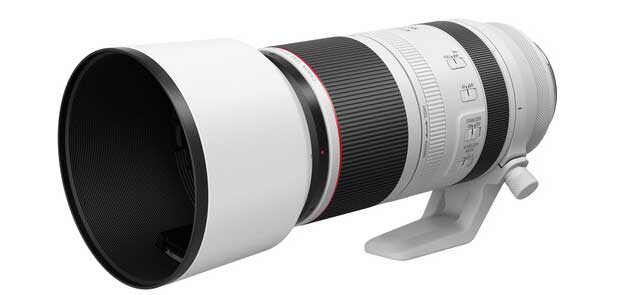
Check the latest deals available on Canon RF 100-500mm lens B&H Store and Amazon.com
I have used this lens with a Canon R5 camera and am glad I did. I have the EF 100 to 400 L I’ve been using with an EF to RF adapter and am enjoying the convenience of quickly switching lenses when out shooting.
The lens is a bit larger and heavier (no more so than the previously mentioned 100-400) than I had anticipated but I’m not complaining. Sharpness and contrast is excellent at all focal lengths and apertures. Great stabilization, having many more keepers with handheld photos at long focal lengths and slower shutter speeds than I thought I might see.
Great lens. Thanks, Canon.
More on… Why we have Selected the Canon R5 Mark II?
Reason BEHIND the selection of Canon R5 mark II as BEST WILDLIFE PHOTOGRAPHY CAMERA OF 2024, instead of Canon R1 or Canon R3
Neither option we have selected, we have is the Canon R3 and Canon R1 camera. Both of these cameras feature a 24-megapixel sensor. Although the R3 camera’s readout speed is somewhere around 4.8 milliseconds, at the very same time, even with the help of electronic shutter, the Canon R3 camera is able to capture 14-bit images. On the other side, we have the Canon R1 camera with a 24-megapixel sensor able to shoot up to 40 frames per second and comes at a high price. But the best part is the readout speed of this particular sensor is 0.02 seconds. So, technically, there will be guaranteed no rolling shutter visible even if you let the camera capture indefinite images at 40 frames per second of speedily moving subjects. So the Canon R1 camera is more recommended to those who shoot F1 racing cars or all speedy moving subjects, specifically recommended to sports photographers. In wildlife photography, yes, you can use this camera too, but in wildlife photography we recommend t, we need details in feathers, we need extreme details to be extracted from a given scene. In that particular scenario, I personally recommend having a camera which creates the perfect balance between resolution and speed, and for that, we have the recently announced Canon R5 Mark II featuring a sensor readout speed of 6.7 milliseconds. At the very same time, with the help of electronic shutter, you can capture 10-bit images. So, morally, this is one of the best cameras available in terms of resolution and speed for a wildlife photographer.
HOW TO CHOOSE THE RIGHT CAMERA FOR WILDLIFE PHOTOGRAPHY
The camera should have a perfect balance between sensor size and resolution. Even if you are using an APS-C size sensor, try to get the maximum resolution possible. If you are considering a full-frame sensor-based camera, aim for the maximum resolution possible. Another condition is that even if the camera has a good readout speed, having the highest speed alone might not be ideal for wildlife photography.
The second most important thing is the type of autofocus system used inside the camera. We are discussing the best Canon cameras for sports and wildlife photography, so Canon’s one of the world’s best autofocus systems doesn’t need further discussion here.
The third important thing is the continuous shooting speed of the camera. Continuous shooting speed depends on several factors. If the camera has a high-speed sensor, you can use the electronic shutter, resulting in minimal rolling shutter effects in your images. However, if you are buying a lower-end camera without a high-speed sensor, you need to pay attention to the mechanical shutter range. For example, the Canon R7’s mechanical shutter can shoot up to 15 frames per second, with minimal rolling shutter effect. If you use the electronic shutter, some rolling shutter effects may be visible.
While they have partially opened their lens mount, there are still great options available for the Canon RF mount. One of the best lenses I recommend for wildlife photography is the 100-400mm f/5.6 lens. This is one of the most reasonably priced lenses available for entry-level shooters. If you have a slightly higher budget, the next best lens is the RF 200-800mm f/6.3 IS USM. This lens provides a good range at a reasonable price.
Try to get weather weather-sealed camera if possible. A camera with good sealing will last longer; otherwise, if your camera lacks sealing, be prepared with additional protection. Wildlife photography often involves exposure to changing weather conditions, so a weather-sealed camera is preferable.
Battery life is also important, but nowadays we have the option to charge our camera with a power bank. Attach a power bank to your tripod and keep it charged. Whenever you place your camera, remember to charge it up to continue shooting for up to 5 hours. Since wildlife photography requires patience and battery backup, these are essential considerations.
Do consider Low light performance and prefer full-frame sensor-based cameras if possible, especially for wildlife and sports photography. In wildlife photography, subjects are often exposed to varying light conditions. A full frame sensor extracts excellent dynamic range from a given scene, And Capturing images in RAW mode can help bring out the maximum detail. The performance depends on variables such as the subject, environmental exposure, and the camera’s capabilities.
You have to BUY CAMERA and LENS BOTH – If you have a budget of $3000, you need to allocate funds for both a camera body and a good lens. Even though the camera body is important, ensure you save a substantial amount for lenses like the RF 100-400mm or 200-800mm. Without a good budget for lenses, effective wildlife photography will be challenging.







I recently purchased the Canon R7 Mark II camera with the 100-400mm lens, just as you recommended. The combo works brilliantly! Thank you so much for saving me both time and money.